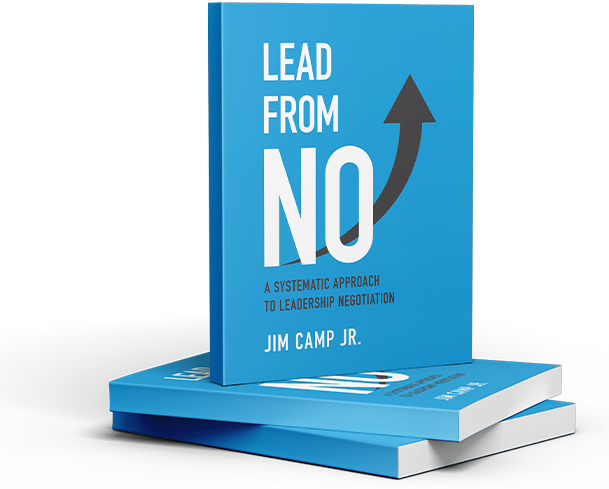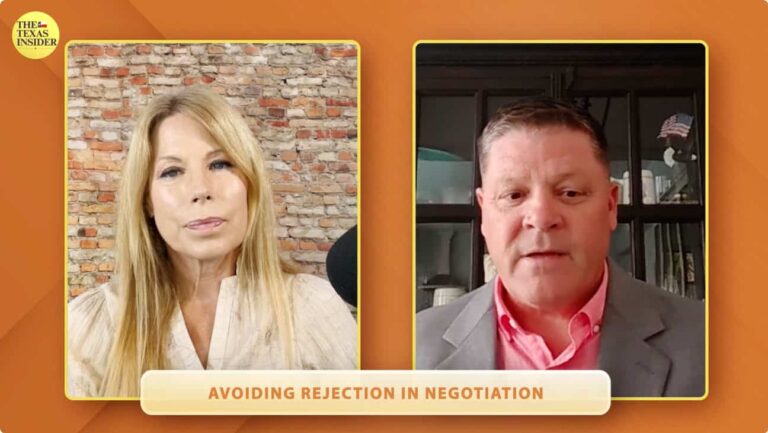A common reason why people come to Camp Negotiations is to determine if we can coach them how to negotiate with a potential customer that is very difficult to deal with – but represents a significant business opportunity. They are concerned because when a customer is perceived as more powerful or is arduous to deal with, it’s easy to fall for the tactics of bullies.
Before their Camp coaching, our client was at a loss because they wanted to realize the business opportunity with their customer and develop a good business relationship, with the hope that they would become a long-term account.
They had been working with their customer (their respected opponent) in good faith, but at the same time, the respected opponent never showed any appreciation for this Win-Win approach. Adding to that, the opponent always acted unreasonably, using tactics like requesting very low pricing today, with the “promise” of more business in the future.
This is how we coach many clients out of this Win-Lose situation and teach them a system to help them negotiate with bullies.
You do not need this deal
In these cases, first, we remind our clients that they do not need this deal. They were in business before the opportunity presented itself, and if the opportunity disappeared, they would be in the same place where they started. The second point we bring up is that negotiation is the process of making decisions that are consistent with your values and your budget of time, energy, money, and emotion. Negotiation does not include making compromises to your values or budget.
Your opponent wants something from you
We coach our clients to remember that their opponent wants something from them. If they did not, they wouldn’t have wasted their time finding and contacting them. So, we coach our clients that their job is to figure out what problem their opponent has that prompted them to reach out. In other words, find out:
What is your opponent not able to control – that they think they will be able to get under control – with your help? This is the reason why they want to speak to you.
Write before you speak
Before you go into any conversation with a difficult opponent like this, you must be very clear on what you can deliver and what your capabilities are.
You then prepare a log. In the Camp System, a Log is a journal of key information specific to a negotiation event. In the log, you write down what you know about this client, such as:
• What are the problems that your opponent and you must address to move the conversation forward toward an agreement?
• How much time, energy, money, and emotion do you believe they have to invest in this negotiation?
• Who are the decision-makers who can say “yes” or “no” and influence any decisions that are made?
Keep a Log and Checklist
Once you write all this down, you realize that you have many unknowns. For example, you may not know exactly what their problems are or what they’re trying to solve. You may have no idea of how much time, energy, money, and emotion they are willing to invest to enter into an agreement with you. You may or may not know who the players are at the account.
Before you even prepare to talk to the other side, you should take this list of knowns and unknowns, and prioritize them by the level of importance.
Start with the problems. What do you think their real problem is? If you are not sure, set up your agenda for your first call purely as a discovery call. You are not prepared to offer anything because you don’t even know what they want, so your only job is to discover their problems.
In the Camp System, we always start by preparing a Checklist. Our first thought is – what are we looking to provide to our opponent in this specific negotiation, and how are we going to provide it to them? This is what we call the negotiation event’s Mission and Purpose.
The Checklist starts with the Mission and Purpose
A Mission and Purpose is always constructed from your opponent’s point of view. If you tell them what you are looking to provide them and they disagree, then you have the chance to ask what they really want.
You just saved yourself a lot of time guessing, and you are getting closer to discovering their real problem. If they agree with what you propose to deliver, then you may be on the right track to pinpointing the real problem they are looking to solve.
An example of a “discovery” type Mission and Purpose statement is, “the purpose of this call is to allow ‘your opponent’ to share with you what’s important to them so they can determine if you’re a good fit to help them solve their problem.” Notice that there is nothing about what you want in this statement.
You must discover the problem that’s holding both of you back from any kind of an agreement. Before you discover the problem, you are not even sure that you can help.
All you want from your opponent at this point in the negotiation is a decision. You want to know if they are willing to share their problems with you so you jointly can determine if it makes any sense for you to work with them in the future. If they agree to share, you can continue.
If they refuse to share what they want, then you can ask them, “tell me what you want me to do?” This question is another way of asking them to share with you what they want.
Now your opponent can either accept to share this information or not – that’s their choice. They can share this information freely or they can hold back (which many of them do.)
Your job is to ask questions. You want to formulate a set of good questions to try to uncover what is really blocking them from moving forward. Remember that the best way to do this is to conduct this conversation from your opponent’s point of view and to their benefit.
Discover the story behind why your opponent has reached out to you. Their story includes what they are doing, why they are doing it, and what kind of help they think they need. Only once you know this, to the best of your ability, can you decide, “Can I help this person?” and then, “Do I want to help this person?”
Never forget, they need you more than you need them. That’s why they reached out to you in the first place. This is something you have to remember.
Do not let your neediness for this potential opportunity blind you from why they reached out to you. It was to fix a problem that they are not able to address without your help. The value they place on your product or service is directly related to the pain they feel or will feel in the future, without your solution.
No compromise
Now is not the time to surrender to their requests for lower prices for false promises of future business. Don’t let them bully you.
They are asking you to compromise, to negotiate against yourself, before you even know if you can or want to help them solve their problem. This is before you know how they value your solution to their problem. That’s why we never make any proposals or offers before we know in great detail what problem the opponent is looking to solve.
Now is the time to discover why they wish to speak with you. Once you figure that out, and you think they could be a solid customer, then you can begin to negotiate all the other problems, including their budget and the decision process they use to make their decisions to choose suppliers.
You must understand and solve all these problems before you present your offer, much less compromise anything.
So, politely acknowledge their initial requests for lower prices and compromises. Then tell them, “I’m not even sure I can help you, so let’s first discover if it makes sense for both of us to work together. If we do, then we may be able to create an agreement that meets both our needs. What do you think?”
When you follow the systematic approach of the Camp System, you can work with difficult opponents on terms that work for you and them. You learn how to discover the real problems that stand between both parties and successful agreements, and you won’t even think of compromise.
Summary
Before you offer any solution to your customer, you must first determine:
1. If you can help them solve their problem – which is often related to something they cannot control on their own without your help.
2. If you want to help them solve their problem – do you think they are trustworthy and will hold up their end of the deal? Will they pay what you need to earn to support them today and in the future?
Customer discovery:
1. What is the customer’s problem that they cannot or don’t want to solve on their own?
2. Determine the cost to the customer if they do not solve their problem. This cost is an indicator of the low end of the range they will pay you to solve their problem. For example, the customer asks for an immediate 30% discount.
If they do not get this discount, what happens? Do they go out of business? Will they make less money because they lose some market share because they are not competitive? Or, do they just make less money than they wish to make?
3. Know the “next thing” that the customer will be able to do after they solve their problem. This is an indicator of the high end of the range they will pay you to solve their problem. If they are not able to do this next thing, then what?
4. Know your short-term requirements. What investments do you need to incur to solve this customer’s problem in the short term?
5. Know your long-term requirements. What investments do you need to incur to solve this customer’s problem in the long term?
The Camp Mindset
1. Do not think of your opponent as all-powerful. Being fearful of an opponent whom you perceive to be all-powerful puts only one idea in your head: if you go up against that entity, you’ll perish. Negotiating with bullies – or anyone – is about one thing: creating a vision in their head that your solution will fix their problem. Your opponent must be able to see the benefit of your solution, even if that opponent is unreasonable.
2. Be prepared. Effective negotiation is a system that requires a disciplined, step-by-step mindset.
3. Don’t start calculating what you’re willing to give up even before you reach the negotiation table. Many people have been raised to believe that being flexible – showing a willingness to compromise – is a good thing. That’s why bullying tactics work. However, when you’re negotiating, just thinking about what you’re willing to lose in the deal is tantamount to saying that what you have to offer is not truly valuable or worth the full price.
There’s no need to do it on your own, especially if the stakes are high. We have many success stories of individuals who have made the 90-day commitment to Camp Personal Coaching. To find more about Camp Personal Coaching and how you can lead your team through challenging negotiations, click here.





